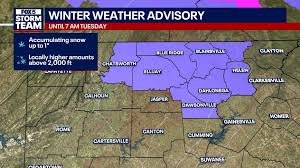
The Ever-Changing Tapestry of Weather: Understanding Our World’s Atmosphere
The weather is more than just a topic for small talk; it’s a powerful, omnipresent force that shapes our world, influences our decisions, and dictates the rhythm of life on Earth. From the gentle morning breeze to a raging tempest, understanding the intricate dance of atmospheric conditions is key to navigating our daily lives and comprehending larger global patterns.
What Exactly is Weather? A Brief Overview
In simple terms, weather refers to the state of the atmosphere at a particular place and time, encompassing elements like temperature, humidity, precipitation, cloudiness, visibility, and wind. Unlike climate, which describes average weather conditions over long periods, weather is dynamic and constantly shifting. These shifts are driven by complex interactions between solar radiation, Earth’s rotation, and the physical properties of our planet’s surface and atmosphere.
The Science Behind the Forecast: How We Predict Weather
Have you ever wondered how meteorologists predict tomorrow’s sunshine or an impending storm? Modern weather forecasting is an incredibly sophisticated field, combining cutting-edge technology with deep scientific understanding. It involves:
- Satellite Imagery: Tracking cloud formations, storm systems, and atmospheric moisture from space.
- Radar Systems: Detecting precipitation, its intensity, and movement.
- Weather Balloons: Collecting data on temperature, humidity, and wind speed at various altitudes.
- Computer Models: Supercomputers process vast amounts of data using complex algorithms to simulate atmospheric behavior and predict future weather patterns.
While no forecast is 100% perfect, advancements in meteorology have significantly improved the accuracy of short-term and even medium-term predictions, helping us plan everything from daily commutes to major events.
Weather’s Profound Impact on Daily Life and Beyond
The influence of weather conditions extends far beyond deciding whether to carry an umbrella. It impacts:
- Agriculture: Crop yields are highly dependent on rainfall, temperature, and sunshine. Droughts or excessive rain can devastate harvests.
- Transportation: Fog, snow, ice, and strong winds can disrupt air, road, and sea travel, leading to delays and safety concerns.
- Economy: Severe extreme weather events like hurricanes, blizzards, and floods cause billions in damage and can cripple industries. Conversely, favorable weather can boost tourism and outdoor recreation.
- Health and Mood: Changes in weather can affect our physical well-being (e.g., allergies, joint pain) and even our psychological state.
Understanding these impacts allows communities and governments to develop better strategies for weather preparedness and disaster response.
The Future of Weather: Climate Change and Advanced Forecasting
One of the most pressing concerns today is climate change, the long-term shift in global or regional climate patterns. This phenomenon is leading to more frequent and intense extreme weather events, rising sea levels, and unpredictable global weather patterns. Scientists are continuously working to understand these complex changes and their implications.
Simultaneously, the future of weather prediction promises even greater accuracy and localized detail, thanks to advancements in AI, machine learning, and vast networks of sensors. These innovations will be crucial in mitigating the challenges posed by a changing climate.
Embrace and Respect the Weather
Whether you’re planning a picnic or preparing for a storm, the weather remains a constant, fascinating aspect of our world. By staying informed, understanding its dynamics, and respecting its power, we can better adapt to its ever-changing whims and appreciate the beautiful complexity of Earth’s atmosphere.
What’s your favorite type of weather, and how does it impact your day?




